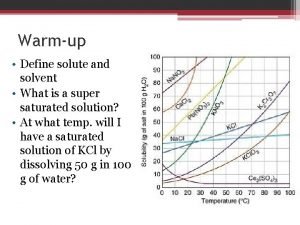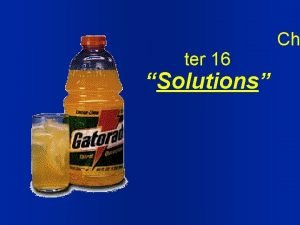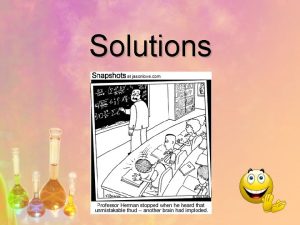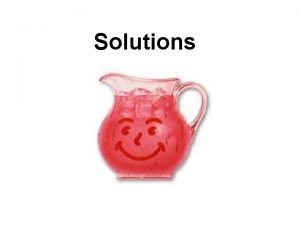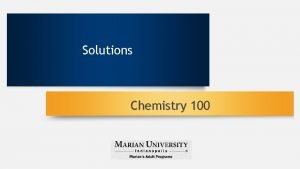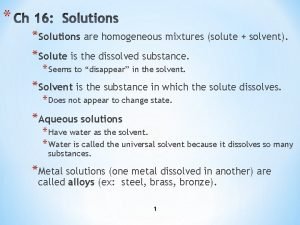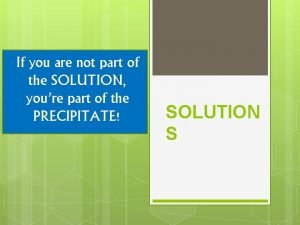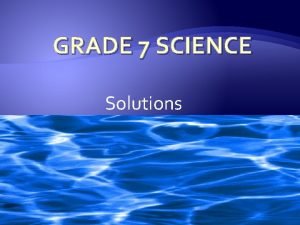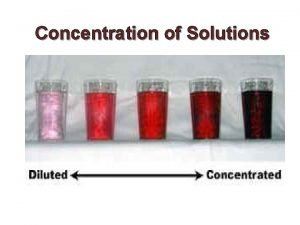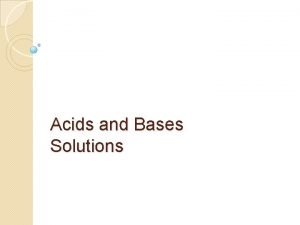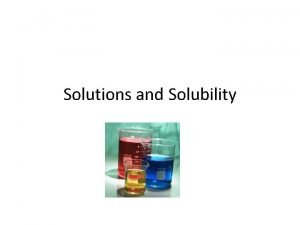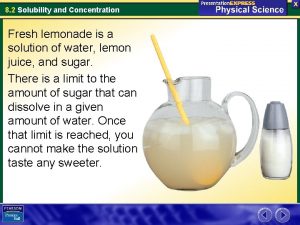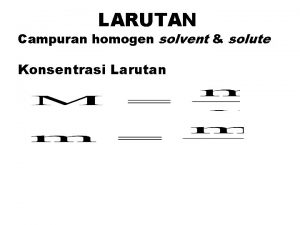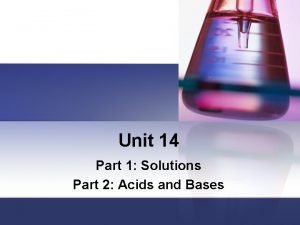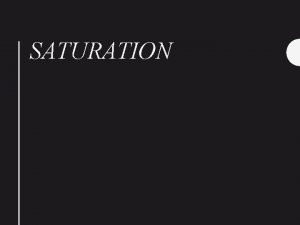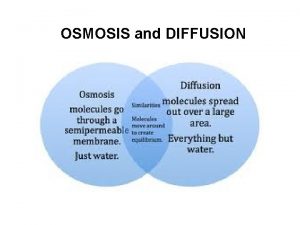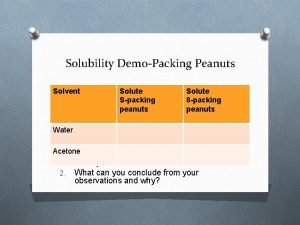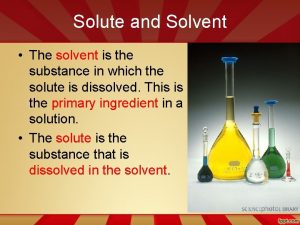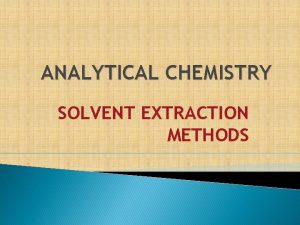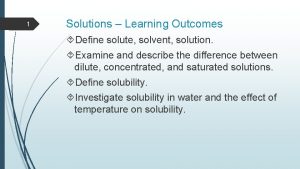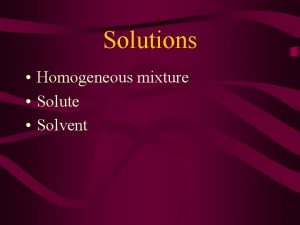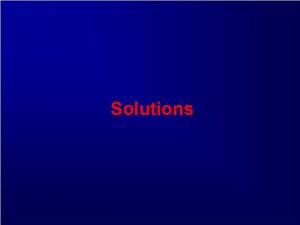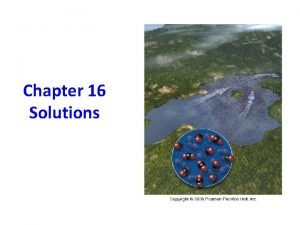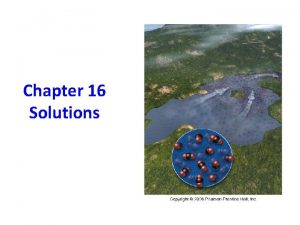Chapter 13 Solutions Solution Solvent Solute Solution a


















- Slides: 18

Chapter 13 Solutions

Solution = Solvent + Solute • Solution – a homogenous mixture of two or more substances or components, with the major component being the solvent and the other minor components being solutes • Solvent - a substance that dissolves another substance • Or, the substance present in greater amount • Solute - a substance which is dissolved by another substance • Or, the substance present in lesser amount

Colligative properties • A property that depends on the amount of a particles in a solution • Independent of type of particle • Ions, atoms, molecules • Electrolytes generate multiple particles when dissolved

Practice • Assuming complete ionization upon dissolution • 1 mole Na 2 CO 3 = ? moles of ions • 2 moles of Ca. Cl 2 = ? moles of ions • 3 moles of Fe 3(PO 4)2 = ? moles of ions

Colligative properties and nonelectrolytes • 1 mole of non volatile nonelectrolyte will form 1 mole of dissolved particles • Sugars, ethylene glycol • Vapor pressure lowering • Freezing point depression • Boiling point elevation • Osmotic pressure

Vapor pressure lowering • A solution will have a lower vapor pressure than the pure solvent • Dissolved particles reduce vaporization rate, creating a new equilibrium that favors more molecules in the liquid phase instead of gas phase • Less gas molecules = lower vapor pressure

Raoult’s law •

Practice • Calculate the vapor pressure at 25°C of a solution containing 99. 5 g sucrose (C 12 H 22 O 11) and 300 g of water. The vapor pressure of pure water at 25°C is 23. 8 torr.

Vapor pressure and volatile solutes •

Deviations from Raoult’s law • In an nonideal solution solute-solvent interactions can be stronger or weaker than solute-solute or solvent-solvent interactions

Freezing point depression •

Boiling point elevation •

Phase diagram: solution vs pure solvent

Osmotic pressure • Osmosis – the flow of solvent, through a semipermeable membrane, going from regions of lower solute concentration to a region of higher solute concentration • Osmotic pressure – the pressure required to stop the osmotic flow

Osmotic pressure •

Colligative properties for strong electrolyte solutions •

Strong electrolyte incorporation •

The end
 Define solute and solvent
Define solute and solvent Solute vs solvent
Solute vs solvent Is a solution a homogeneous mixture
Is a solution a homogeneous mixture Solute vs solvent
Solute vs solvent Solute vs solvent
Solute vs solvent Solute and solvent
Solute and solvent A homogeneous mixture of a solute and solvent
A homogeneous mixture of a solute and solvent Examples of solute and solvent combinations
Examples of solute and solvent combinations Is vinegar a solute or solvent
Is vinegar a solute or solvent Solute vs solvent
Solute vs solvent Solvent vs solute
Solvent vs solute Circle the solute and underline the solvent
Circle the solute and underline the solvent Sweet tea solute and solvent
Sweet tea solute and solvent A measure of the amount of solute dissolved in a solvent
A measure of the amount of solute dissolved in a solvent Is carbon dioxide in lemonade a suspension
Is carbon dioxide in lemonade a suspension Chapter 1 matter and change worksheet answers
Chapter 1 matter and change worksheet answers Contoh solvent dan solute
Contoh solvent dan solute Vinegar solute or solvent
Vinegar solute or solvent Quizlet
Quizlet
